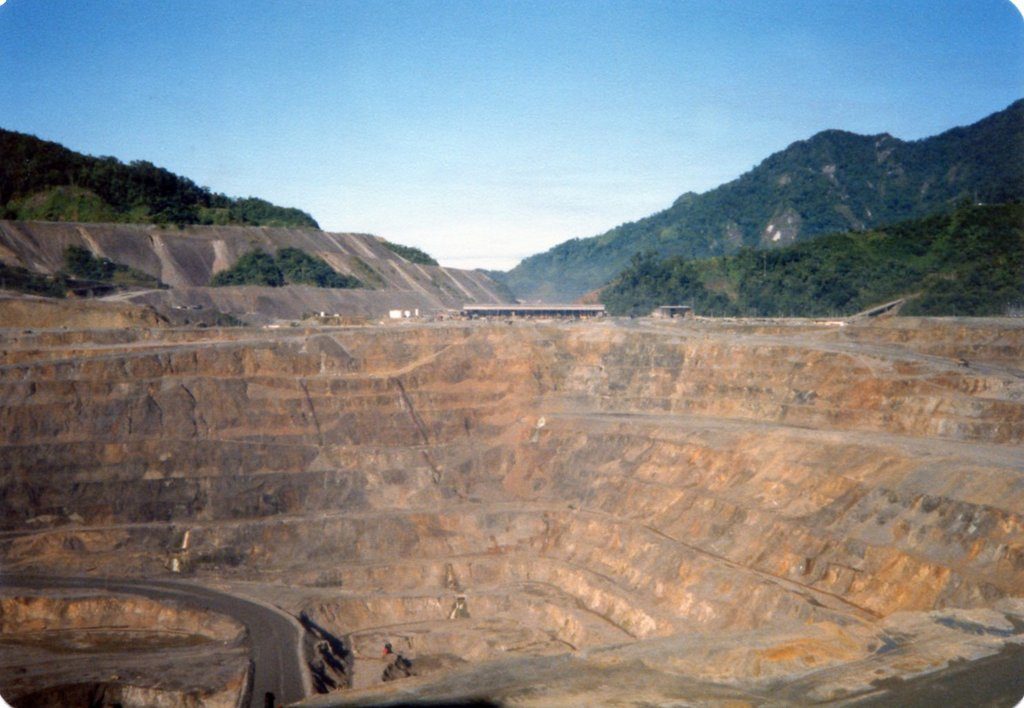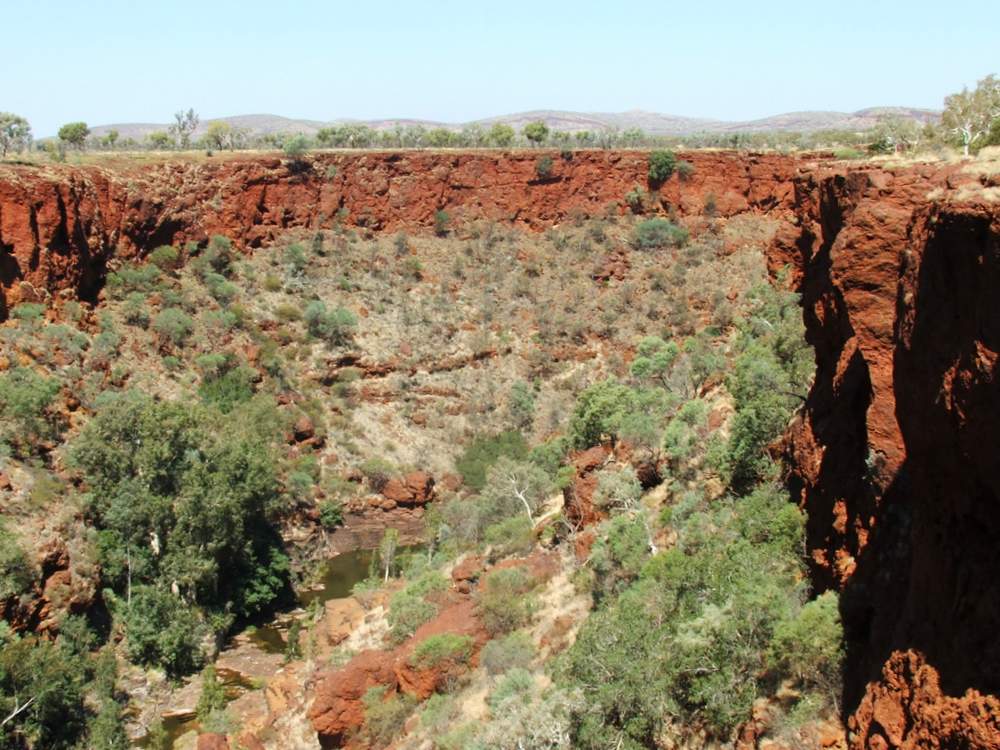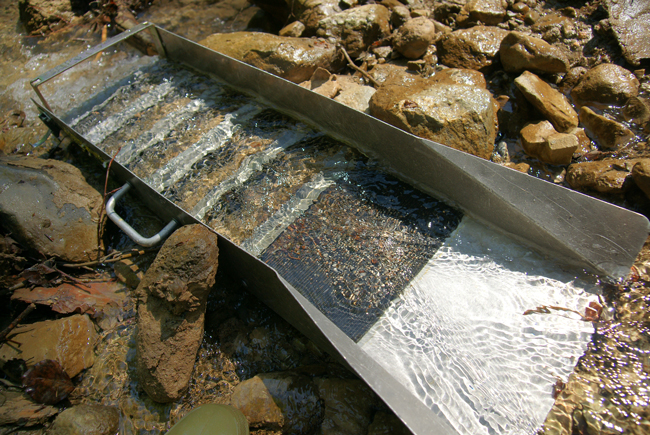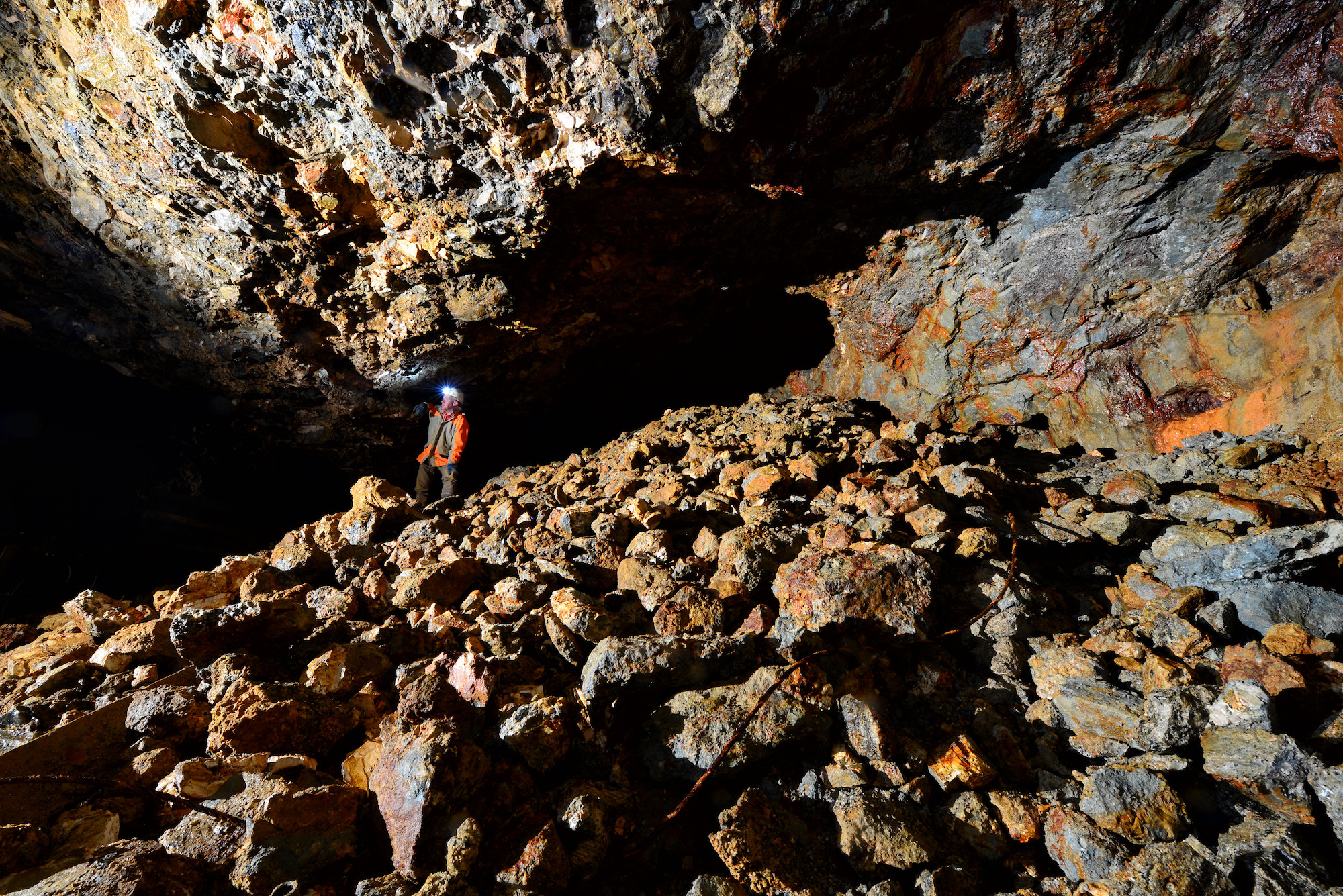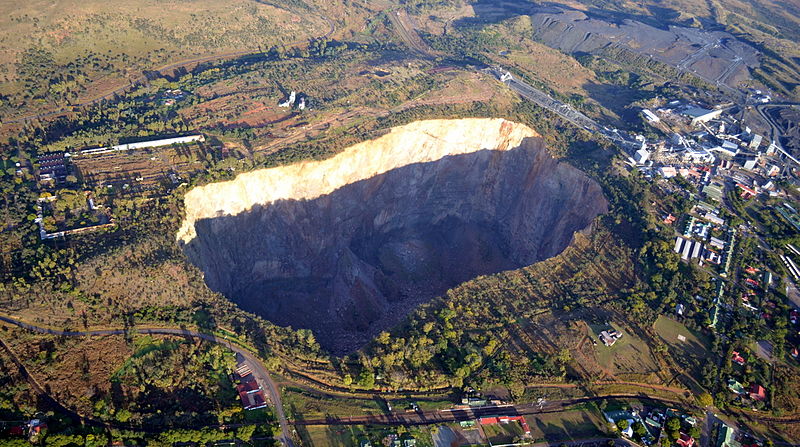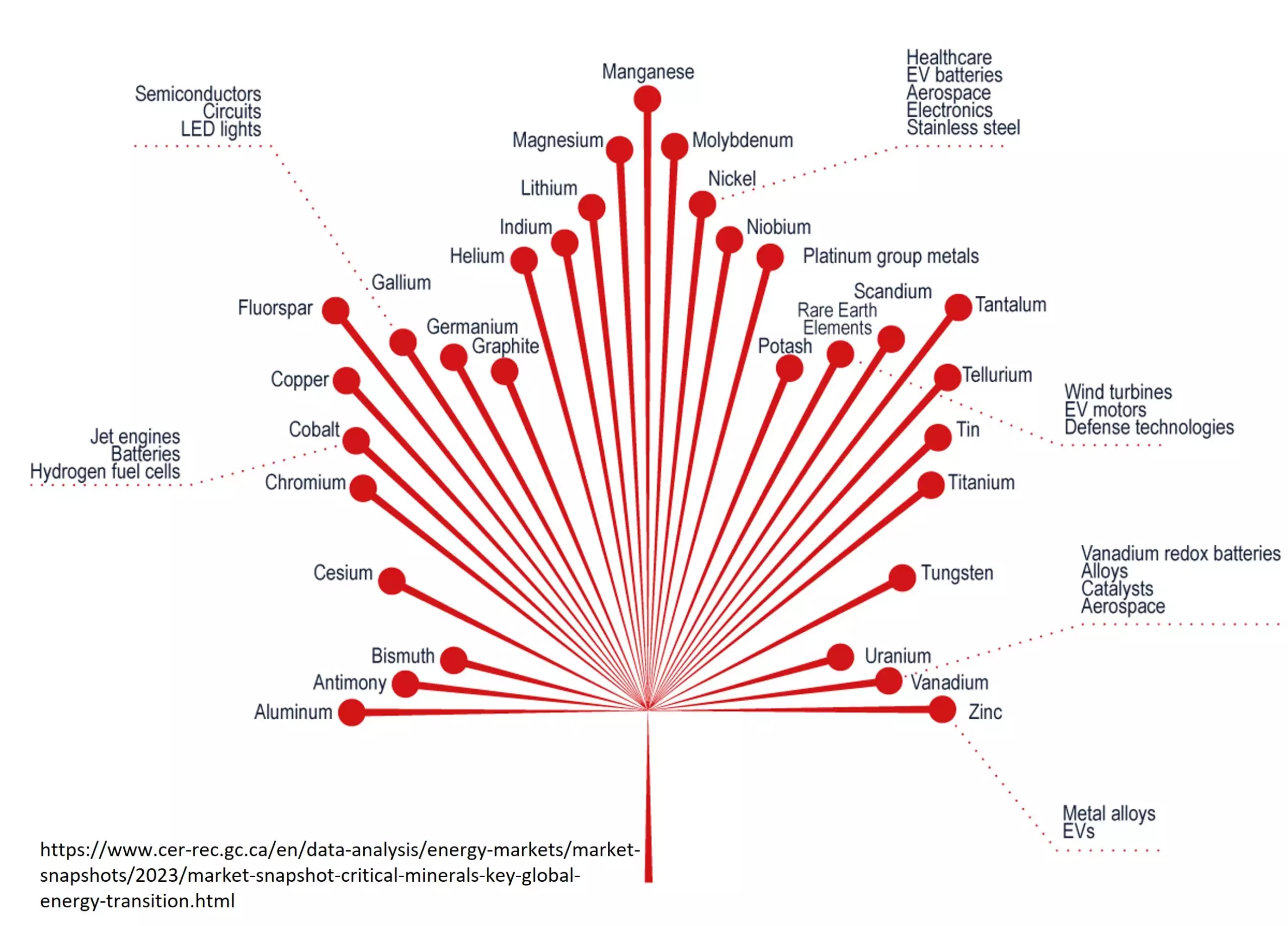All the world’s Banded Iron Formations appear to have been formed by an unusual, one-off event. With many types of mineralisation – we can see the process occurring today – for example active volcanoes show us mines in the making, as does undersea hydrothermal activity. Banded iron formations (BIFs) are different – they were all formed at a time where the earth was a decidedly different environment than it is today.
Banded iron formations are critical to our current economy as they are by far the biggest source of economic iron deposits.

A BIF is hard and heavy sedimentary stone. The bands are composed of narrowly banded sedimentary rocks which alternate a variety of iron rich layers with fine grained quartz (chert) layers. Common minerals associated with BIFs include hematite or magnetite (iron oxide), siderite (iron carbonate) and stilpronmelane (iron, magnesium alumiosilicate)
Banded iron formations are critical to our current economy as they are by far the biggest source of economic iron deposits. China and Australia are the world’s largest iron producers, and both have enormous reserves of BIFs. Smaller deposits are mined elsewhere including the USA and Canada.
How Are BIFs Formed
Most BIFs date from around 2400 million years ago, in the extremely early days of earth’s evolution, during the Archaen era. They were created in conditions that will never occur again. BIFs are the product of an epochal change in the world’s atmosphere known as the “great oxygenation event”.
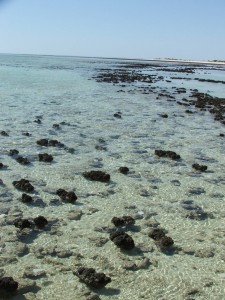
At that time, the world was covered with acidic, iron-rich oceans and had an atmosphere without oxygen. The only life forms were primitive algae. The evolution of blue-green algae (cyanobacteria) changed the world. These algae formed reef-like structures called stromatolites, not unlike the coral reefs of today. The bacteria were photosynthetic – a chemical reaction that releases oxygen. Iron is highly reactive with oxygen, which is why your old car rusts so quickly, so the bacteria caused iron oxides to form and settle in the ancient oceans. As the cyanobacteria continued to multiple, eventually most of the iron in the seawater had been removed, and the oxygen began to escape into the atmosphere, resulting eventually in the atmosphere that we are dependent on today.
For 2 billion years, blue-green algae were the dominant life form on earth. They are no longer dominant, but that not extinct, they were rather over-whelmed by all the oxygen dependent life that they helped create, but they still survive in isolated areas. Stromatolites can be seen in Western Australia – right next door to the world’s largest deposit of banded iron formations, which they helped form.
There are some other smaller BIFs deposits that are significantly younger, and there is some argument about their origin. Although some would point to a global freezing event (“snowball earth”) which isolated the seas from the oxygen-rich atmosphere, it’s probably more likely that these later deposits, formed in small, stagnant inland seas or lakes which were at least in part anoxic. For example, the Black Sea would create BIFs today if enough iron rich sediment was added to it.
Secondary Enrichment
After the initial deposition of BIF deposits are often further enriched in iron by either of :
- supergene enrichment – where weathering saw the leaching of soluble materials;
- hydrothermal processes.
Both of these can result in high-grade hematite (martite) and goethite-rich deposits that can contain 50-68% iron.
Largest BIF Deposits
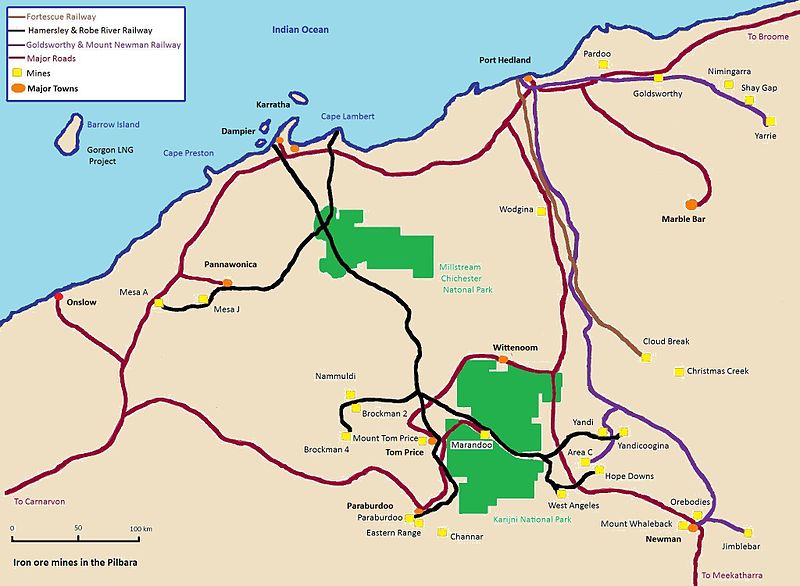
Hamersley Province, Pilbara
The Hamersley province of Western Australia contains the largest area of banded iron formations in the world. This remote and sparsely population region remained undiscovered until 1952. The Pilbara BIF’s were deposited about 2400 million years ago, in the late Archaen early Proterozoic era. They extend over some 150,000 km2 and contain around 300 trillion tonnes of iron.
There are two major Pilbara iron ore producers BHP Billiton and Rio Tinto. BHP Billiton owns mines at Mt Whaleback, Yandi, and Mt Goldsworthy
Hamersley Iron Pty Ltd, wholly owned by Rio Tinto, operates mines at Mt Tom Price, Paraburdoo, Brockman, Marandoo and Nammuldi.
The workforce lives in company towns, and are often on a fly-in-fly-out shift system from Perth, some 1100km to the south, and from as far away as New Zealand.
Iron ore is mined and processed in the remote open-pit mine sites. After crushing and screening of the ore on site, the ore is carefully graded. There is sophisticated automatic sampling prior to shipping the ore via train to the port at Dampier over 1000km away, on the world’s longest private railway. Ore is shipped directly to Asia and elsewhere from the major ports of Dampier and Port Hedland.
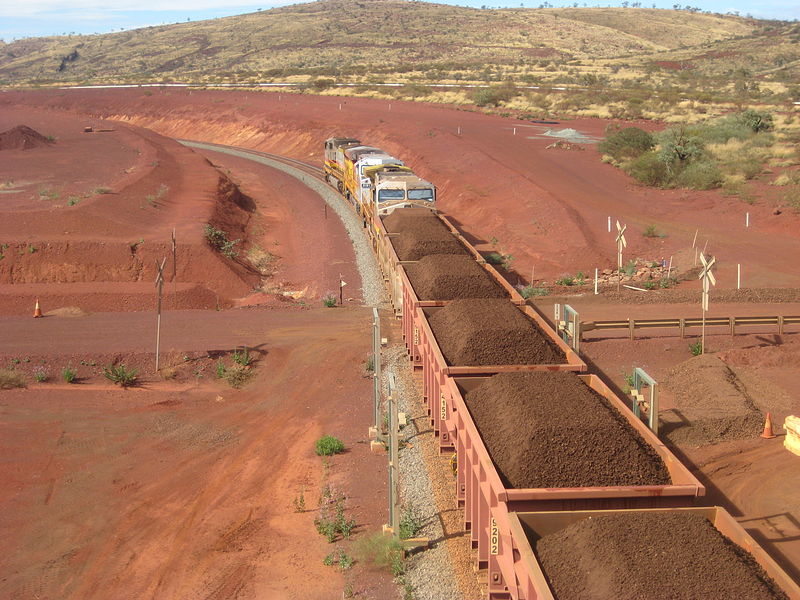
In 2009 Australia produced 394 million tonnes of iron ore valued at $30 billion- 97% of which came from the Pilbara mines. Australia is the world’s largest exporter, and second largest producer, after China of iron ore.
It is thought that there may be an economic resource of some 24 billion tonnes, however at current extraction rates most would be gone within 30 to 50 years.
Carajas Iron Mine, Brazil
The world’s largest iron mine is the Carajas Mine located in northern Brazil and owned by mining giant, Vale. While it’s proven and probable reserves or iron are approximately 7.2 billion metric tons, weathering processes have enriched the Carajas BIF’s in other commodities such as copper, tin, aluminium, nickel and gold.

Mesabi Iron Range, Minnesota, USA
In northeast Minnesota the BIFs, locally known as taconite, was initially ignored as too low-grade to mine. However, as higher-grade mines were depleted taconite began to be mined and is credited with saving Minnesota’s mining industry.
The Hull Rust Mahoning Mine, Hibbing, Minnesota is the one of the world’s largest iron ore open pits. Mined since 1895 originally as 30 separate underground mines, the mine now covers a total area of 1,591 acres The pit extends 3 1/2 miles in length, 1 1/2 miles wide, 535 deep The mine may have supplied as much as a quarter of all the iron ore produced in the US during both World Wars. Cliffs Natural Resources operates the mine
North China Banded Iron Formations
The BIFs of China occur in four main provinces: Anshan, Hebei, Wutai and Qingling. Like Australia’s BIFs all of these are a similar age of late Archean.
China mines relatively low grade BIF, which have little secondary enrichment, they are generally less than 30% iron grade. The operations are economic thanks to the but low cost mining techniques and cheap labour

